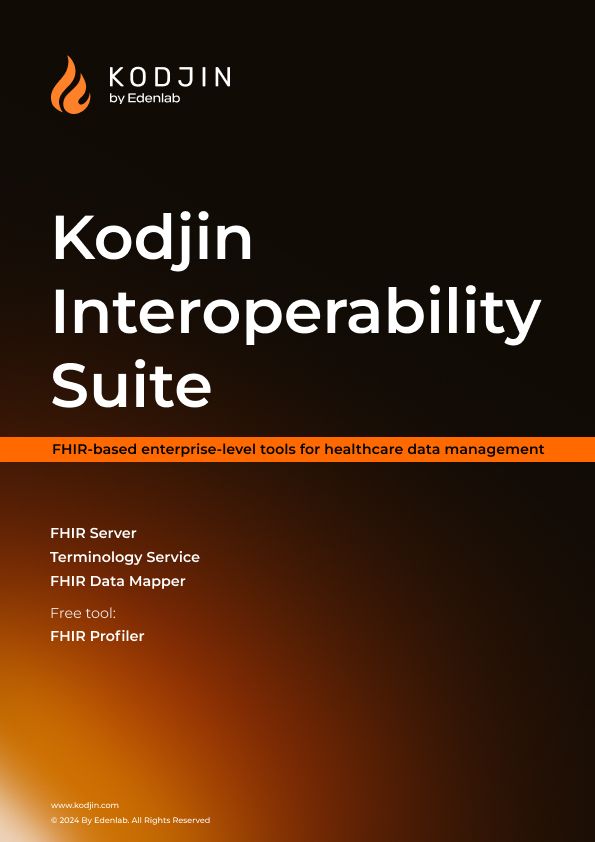In the modern healthcare industry, data reigns supreme. Data analytics can unveil trends, improve patient care, and revolutionize operational efficiency. It’s estimated that only a fraction, around 5%, of available healthcare data is readily usable. The rest, a massive 95%, lies dormant, largely due to the divide between structured vs. unstructured data in healthcare.
This article provides an in-depth look into structured and unstructured data in healthcare. We’ll go beyond the basics and explore advanced technologies, from machine learning to artificial intelligence, that are making it increasingly feasible to harness unstructured data for actionable insights.
Structured Data: The Backbone of Traditional Analytics
Healthcare structured data adheres to a highly organized format, offering the advantage of straightforward storage, querying, and analytics. These data types include integers, decimals, Boolean values, dates, and strings that can be placed in tables via a Relational Database Management System (RDBMS). They are readily searchable with query languages like SQL.
Healthcare Applications of Structured Data
Structured data is the backbone of many healthcare systems, notably Electronic Health Records (EHRs). Here are more detailed applications:
- Clinical Trials: Structured datasets are crucial in running and managing clinical trials. They allow for efficient tracking of patient demographics, test results, and outcomes.
- Telemedicine: In telehealth applications, structured data can help in arranging appointments, keeping records of patient interactions, and generating billing information.
- Quality Metrics: Healthcare facilities often use structured data to measure performance metrics, which can be critical in improving patient care and operational efficiency.
Organizations such as HL7(R) are making strides in standardizing structured data for better interoperability between different healthcare systems. In this context, the importance of FHIR(R) (Fast Healthcare Interoperability Resources) cannot be overstated. As a standardized framework for healthcare data exchange, FHIR aims to streamline the collection, storage, and sharing of structured data across different systems, enhancing efficiency and patient care.
Read also: Healthcare Big Data Storage Cost Optimization
Unstructured Data: The Untapped Goldmine
If we compare structured vs. unstructured data in healthcare, the latter does not conform to a specific, predefined data model. It is more heterogeneous and can include everything from text and images to log files and videos.
Comparison of structured and unstructured data in healthcare
To understand the difference between structured and unstructured data in depth, let’s delve into a comparative analysis:
| Criteria | Structured Data | Unstructured Data |
| Definition | Organized data with a predefined schema | Data without a predefined structure |
| Examples | Patient demographics, lab results, vital signs | Clinical notes, radiology images, audio recordings |
| Storage | Relational databases, FHIR servers | File systems, data lakes, blob storage |
| Searchability | Easily queryable with SQL or APIs | Requires text mining and NLP for querying |
| Interoperability | High; standards like HL7, FHIR available | Low; lacks standard formats |
| Data Integrity | High; data validation is easier | Moderate; prone to inconsistencies |
| Analytic Complexity | Low; easily manipulated and analyzed | High; requires preprocessing |
| Compliance | Easier to ensure with existing systems | Can be challenging; needs custom solutions |
| Use Cases | Billing, Epidemiology, Drug Interactions | Diagnosis support, patient narratives |
| Scalability | Highly scalable with traditional DB tools | Requires specialized big data solutions |
| Real-Time Processing | Generally easier | Complex and computationally expensive |
| Cost | Lower storage costs due to organization | Higher storage and processing costs |
Healthcare Applications for Unstructured Data
The applications for unstructured data in healthcare are vast but largely untapped. Here’s a more detailed look:
- Radiology
In medical imaging, data predominantly exists in an unstructured format. Radiological images like X-rays, CT scans, and MRIs are rich sources of diagnostic information. By applying machine learning algorithms, healthcare organizations can automate image interpretation to a great extent, improving the speed and accuracy of diagnosis.
- Patient Narratives
Unstructured data in healthcare also exists in patient narratives collected during consultations. By leveraging data mining in healthcare, these narratives can reveal valuable clues for diagnosis and treatment planning. Natural Language Processing (NLP) techniques can help parse this data to extract relevant medical terms and conditions, assisting clinicians in making better-informed decisions.
- Social Media
Healthcare providers often underestimate the value of social media as a source of unstructured data. Text analytics for health can scour social media platforms for public opinion on healthcare issues or institutions, enabling providers to understand the sentiment and adapt their practices or address concerns accordingly.
To truly leverage the power of unstructured data in healthcare, organizations must invest in advanced analytics and machine learning tools, and address AI challenges in healthcare that come with implementing these technologies. Incorporating data lakes or advanced database systems that can handle unstructured data is a good starting point. On top of this, it is essential to maintain compliance with healthcare data regulations like HIPAA in the U.S. or GDPR in Europe to ensure patient confidentiality is not compromised.
Unstructured data may not fit into traditional databases, but it holds a goldmine of opportunities for healthcare organizations willing to dig deeper. Leveraging big data in healthcare alongside unstructured data can help reveal deeper insights and drive more informed decisions. With the right tools and strategies, the healthcare industry can unlock the tremendous potential that unstructured data offers.
Challenges of Using Unstructured Data in Healthcare

Data Preprocessing and Quality Issues
Unstructured healthcare data has noise, errors, missing values, and quality issues. Preprocessing is an essential step in rendering this data usable. Challenges include:
- Complexity and Dimensionality: Unstructured data is complex, often requiring sophisticated preprocessing techniques for clinical decision support systems, health and wellness monitoring, and disease identification.
- Data Aggregation: Data comes from varied sources like Electronic Medical Records (EMRs), handwritten clinical notes, and medical images, each having different formats and frequencies. Aggregating this data into a standardized format is a significant challenge.
- Transformation: Converting unstructured data into a structured format for analytics and clinical decision-making systems often involves complex transformation engines that clean, split, translate, merge, and validate the data.
Interoperability Issues
Interoperability is crucial in healthcare, allowing different systems to share and use data cohesively. Challenges include:
- Lack of Uniform Coding: The absence of a uniform coding system across vendors impedes the seamless exchange of patient information between different hospitals and healthcare applications.
- Data Harmonization: Achieving compatibility between unstructured vs. structured data in healthcare is a persistent issue affecting data-driven medicine and clinical decision-making.
- Stakeholder Collaboration: Achieving true interoperability requires an integrated effort from all stakeholders, including healthcare providers, data scientists, and regulatory bodies.
Information Extraction
In healthcare, vital data like disease diagnosis, surgery details, and patient history are often stored in natural language text. Extracting structured information from these clinical texts necessitates advanced Natural Language Processing (NLP) and machine learning techniques. The challenges include:
- Context Awareness: Extracting accurate information often requires a deep understanding of the context in which the data exists, which automated systems currently struggle with.
- Predictive and Prescriptive Analytics: While information extraction techniques can assist in disease identification and clinical care, they also must continuously evolve to contribute effectively to predictive and prescriptive analytics.
Examples of Structured and Unstructured Data in Healthcare
Structured and unstructured data both play crucial roles in healthcare, serving different purposes and presenting unique challenges and opportunities for analysis and use. Here’s a brief overview of each, along with examples:
Structured Data in Healthcare
Healthcare organization structured data, meticulously organized and easily retrievable, includes critical components such as Electronic Health Records (EHRs), laboratory results, and billing information, etc.
Electronic Health Records (EHRs)
These are digital versions of patients’ paper charts and contain a comprehensive record of a patient’s medical history, diagnoses, medications, treatment plans, immunization dates, allergies, lab results, and more. EHRs are structured to support easy access and sharing among authorized healthcare providers.
Labratory Results
Laboratory results are a form of structured data that include quantitative and qualitative outcomes of lab tests, such as blood tests, urinalysis, and pathology reports. They’re standardized to allow for easy interpretation and integration into EHRs.
Billing Information
This encompasses coded data related to medical billing and insurance claims, including details about treatments provided, associated costs, and patient insurance information. It uses standardized codes, such as ICD-10 for diagnoses and CPT for treatments, facilitating efficient processing and analysis.
Unstructured Data in Healthcare
Unstructured data doesn’t follow a predefined model, making it more complex to process and analyze but also rich in detail and context.
Clinical Notes
These are textual records made by healthcare providers during patient visits, containing observations, thoughts, and considerations about the patient’s condition, treatment options, and plans. While rich in detail, their unstructured nature makes them challenging to analyze systematically.
Medical Imaging
Images such as X-rays, MRIs, and CT scans provide visual information about a patient’s anatomy and condition. While the images themselves are unstructured, metadata (like date, time, and type of scan) can provide some structure.
Patient Communication
This includes emails, text messages, and other forms of communication between patients and healthcare providers. The content varies widely and can include health questions, updates, and feedback, making it a valuable but unstructured source of patient data.
Leveraging AI and Machine Learning for Unstructured Data
Despite the challenges, the potential for transforming unstructured healthcare data into actionable intelligence has increased dramatically with advancements in Artificial Intelligence (AI) and Machine Learning (ML).
By implementing the right tools and methodologies, the healthcare industry can unlock the significant value that unstructured data holds, narrowing the gap between structured data vs. unstructured data in healthcare.
Natural Language Processing (NLP): Bridging the Gap
A primary tool under the AI and ML umbrella that has been making strides in healthcare is Natural Language Processing (NLP). It is designed to understand human language and convert it into a machine-readable format. For instance, NLP can analyze free-text clinical notes and categorize the information into ICD-9/ICD-10 and HCC codes, making it easier for healthcare providers to sort and retrieve information when required.
Image Recognition and Analysis
Radiological images like X-rays, MRIs, and CT scans are other examples of unstructured data. Advanced machine learning models can analyze these images to detect abnormalities, sometimes more accurately than human radiologists. These models are trained on millions of labeled images and can sift through terabytes of new data to provide real-time diagnostic support. This speeds up the diagnostic process and ensures better accuracy, potentially saving lives.
Sentiment Analysis for Patient Feedback
AI can help healthcare organizations improve service quality by analyzing unstructured feedback from social media, surveys, and online reviews. Sentiment analysis algorithms can break down patient comments into categorized insights about different aspects of healthcare delivery, such as the efficiency of administrative processes, quality of patient care, and effectiveness of treatment options.
Real-World Evidence and Pharmacovigilance
Drug development and monitoring are other areas where AI and ML can bring transformative changes. Unstructured data like doctors’ notes, social media conversations around drug effects, and patient feedback can be analyzed to provide real-world evidence of drug efficacy and safety.
In pharmacovigilance, NLP can automate the extraction of adverse drug reactions from unstructured datasets, thereby streamlining the safety monitoring process and ensuring quicker action in case of safety concerns.
Predictive Analysis and Risk Modeling
AI and ML algorithms can go beyond merely structuring data to predicting future healthcare outcomes based on historical data. This can include predicting patient no-shows, understanding which patients are more at risk for readmission, or anticipating disease outbreaks based on various unstructured data inputs like regional news reports, social media conversations, and environmental data.
Conclusion
The current landscape of healthcare is rife with opportunities to utilize structured and unstructured data to improve patient outcomes and operational efficiencies. While structured data offers a reliable and organized way to store and analyze information, the untapped potential of unstructured data is great, particularly with the advent of advanced technologies like AI and ML. However, most of this data remains underutilized due to the difference between structured and unstructured healthcare data.
As we move towards an increasingly data-centric healthcare model, organizations that can successfully integrate structured and unstructured data will lead to innovation, patient care, and operational efficiency.






